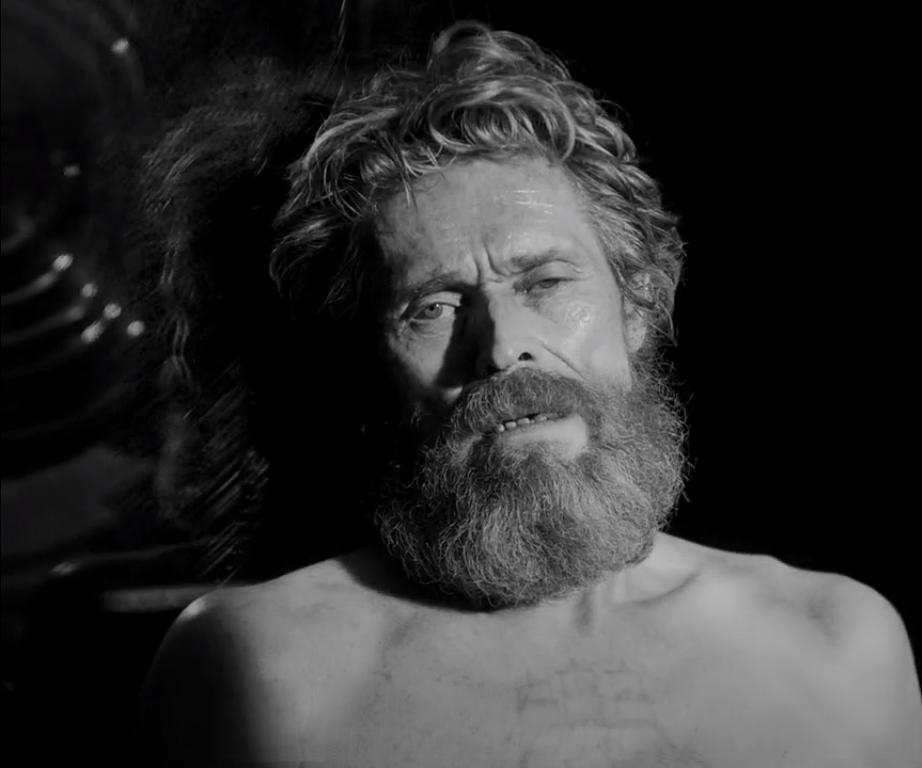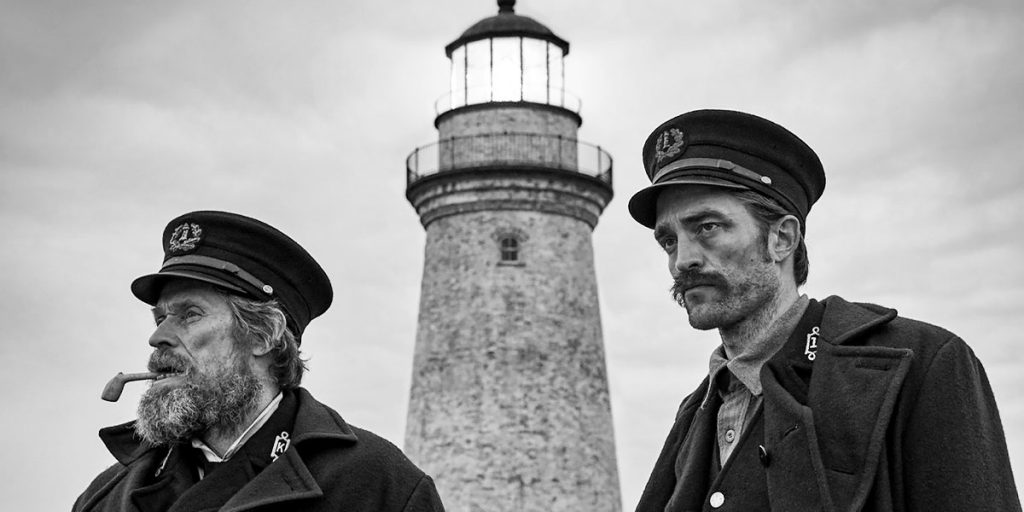In The Lighthouse, director Robert Eggers resorts to folk tales and legends to sketch an uncompromisingly grim portrait of the human soul.
Director: Robert Eggers
Genre: Horror
Run Time: 109′
Rated: 15
U.S. Release: October 18, 2019
U.K. Release: January 31, 2020
Where to Watch: On digial & VOD and as a limited edition boxset
It’s bad luck to kill a seabird. But, though this top-of-the-list lesson for sailors-to-be was famously immortalised by English Romantic poet Samuel T. Coleridge in his Rime of the Ancient Mariner, this rule of thumb of yore can’t hold water anymore. The pact between the wild black waters and the seamen who roam them has been broken. And the ocean is ready to unleash all its lustful rage upon the intruders. And it’s exactly in the middle of a grey, watery land of nothingness that Robert Eggers’s psychological thriller The Lighthouse opens.
As the camera slowly fades in, disquietude seizes us. We recognise the outline of a lighthouse, then the rocky island on top of which it is standing. We meet the heroes of the story, and our hearts leap as we understand that, honest to God, they’re the most despicable people we’ve ever cast our eyes over. Everything seethes with rage. This is not going to be a lazy Sunday afternoon movie.
In Coleridge’s high-seas allegory of perdition and atonement, a mariner kills an albatross and, as a result, the vessel he’s riding gets stuck in calm seas and its crew start hallucinating. Just like Coleridge’s unfortunate hero, sea dog Thomas Wake (Willem Dafoe) and inexperienced Thomas Howard (Robert Pattinson) have to try and keep their sanity during four excruciating weeks of lighthouse-keeping. Which, as a matter of fact, turns out to be an insurmountable challenge.
Eggers is still quite a newcomer in the world of filmmaking. Nevertheless, interpolation of The Lighthouse and his first film The Witch (2015) might yield appetising results. In fact, the two films share one and the same attitude towards folklore and folk tales. Eggers, who co-writes the script with his brother Max, seamlessly sews legends and superstitions into the fabrics of his plots, pairing them up with a fine-tuned use of frames, shots, and cinematography to write a perfect compendium of popular wisdom – and to show that yesterday’s nightmares might in fact reinvigorate today’s ghosts.

So, unlike Coleridge, The Lighthouse offers no lesson to be learned. Eggers’s bidimensional world is devoid of any sense of value and human affection, thus becoming a jungle of gorgeous cinematic technique and macabre memento mori where the only way out is to follow your destiny and munch on gut feelings. Even when they suggest staring at the lighthouse lantern until you go blind or smashing a seagull against a rock until you can’t really tell its shape from that of a bunch of wooden sticks. As Dafoe and Pattinson’s characters’ name could imply, the two Thomases might be the same person; and if that were true, all action would be a projection of one individual’s struggle. But then there’s no real proof to confirm this hypothesis.
Stuck in The Lighthouse’s tubular, black and white 1.19:1 screen ratio, the film’s rather Ahabesque protagonists melt into the texture of Eggers’s 35mm reel, renouncing their mainland lives for the cruel floating inconsistence of dreams. Hieratic and flesh-bound at the same time, Dafoe and Pattinson strain their bodies to deliver exquisite portraits of unrepenting outcasts. And, as the mono soundtrack conveys, it is in their tormented, horrific hallucinations that the film takes place.
Self-evidently enough, horror tropes do play a major role in this tea-for-two recital. Nevertheless, Eggers isn’t fond neither of jump scares, nor of phantom chainsaws. He wants to make our bowels shake with angst because of ruthless violence and beastlike behaviour. His haunted island is governed by Old-Testamentary laws, and, once a cycle of punishment’s over, another one is ready to start. This would have displeased Coleridge, who believed in salvation through repentance. This highly pleases our eager, voyeur eyes, which apparently can’t get enough of being reminded of how wicked human nature is, and that heaven is but a sugar token to let us dream sweet dreams again.
The Lighthouse is now Available to Rent & Own on Digital, DVD, & Blu-ray and as a limited edition boxset.

